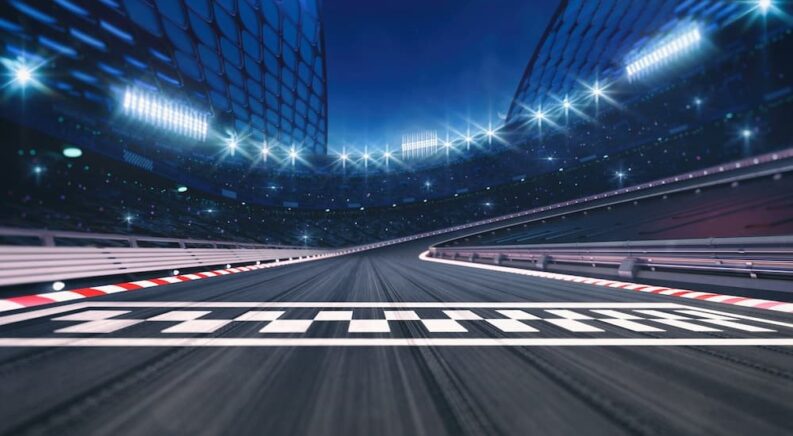Motorsport success has been part of the Chevy story since the automaker’s earliest days; in fact, it’s literally in Chevy’s DNA. While other major American automakers have long had a presence in the racing world, Chevy takes the pursuit personally. Browse the list of past Indianapolis 500 winners, and one name will stick out when you get to the 1920 race: Chevrolet. This might not seem very surprising until you realize that Chevrolet wasn’t just the manufacturer of the winning car; it was also the last name of the winning racer. Chevrolet brothers Louis, Arthur and Gaston were all passionate racers, and it was Gaston who took home the Indy 500 trophy in the 1920 race.
Look around your local Chevy dealer, and you’re unlikely to find any of the models that have made Chevy such a mainstay in the world of high-octane racing. The Lumina, Monte Carlo, and Impala have all been put out to pasture, and the Camaro looks to join them following the 2024 model year. That’s not to say Chevy’s performance-minded days are over, with a new era of all-electric vehicles holding untold potential, but we’re certainly in something of a transitional period.
Chevy has continued to replicate its early success over much of the past 100 years, becoming the winningest manufacturer in motorsports. The automaker’s accomplishments include 39 NASCAR manufacturers champions, 23 NHRA manufacturers titles, and eight class wins at the 24 Hours of Le Mans. Still, the Indianapolis 500 dominance might just be the brand’s most impressive accomplishment, with 12 Indy 500 wins since 1988. With the start of the 2024 IndyCar season just around the corner, we thought it would be a good time to look back on Chevy’s track record and see how the GM brand has come to be one of the juggernauts of open-wheel racing series.
The Exit
Founded in 1997, the IndyCar racing series was born out of a schism between Championship Auto Racing Teams (CART) and the owner of American open-wheel racing’s signature track, the Indianapolis Motor Speedway. The two would settle their difference and merge in 2008, retaining the IndyCar name and cementing its status as America’s premier open-wheel racing series. Chevy would be a mainstay on the IndyCar podium right from the start, winning the series’ first six championships between 1997 and 2002, but it wasn’t to last.
Given Chevy’s past success in the IndyCar scene, the company’s 2005 decision to exit the racing series came as a surprise to many fans. Chevy cited the competition’s rising cost as their reason for withdrawing from the IndyCar series, pinning the blame on two rivals in particular. “Honda and Toyota have driven the price up and we had to examine how much we were spending and what we were getting out of it,” said GM Racing director Doug Duchardt.
One quick look at the leaderboard went a long way in explaining the move. Honda went on a historic run upon entering the IndyCar scene in 2003, earning 12 of 14 checkered flags in the 2004 season and putting its competitors on notice. This isn’t anything new in the world of motorsport, where upstart teams and manufacturers often make a big splash upon entering a series, raising the bar and fostering fierce competition. Just look at Formula One’s Red Bull Racing, which took Ford’s bottom-feeding Jaguar Racing from a dismal, seventh-place team into a perennial powerhouse that’s become one of the most identifiable brands in motorsport.
In the 2004 season, Chevy’s GenIV Indy V8 could be found under the hood of Pennzoil Panther Racing, Red Bull Cheever Racing, Dreyer & Reinbold Racing, and Patrick Racing, but the engine simply couldn’t compete with the likes of Honda and Toyota. Red Bull Cheever Racing driver Alex Barron was the most successful, Chevy-powered driver in the 2004 season, but only managed to climb into 12th place by the year’s end. This lack of success, along with Honda’s dominance, led Chevy to conduct a close cost-benefit analysis of its racing operations, and the math just didn’t work out.
“At the beginning of the IRL, there was a certain model we could use and we were successful at it,” said Duchardt. “That worked for us. There’s no secret that the costs have gone up and the TV ratings and attendance have been flat or down. You have to lay that out. It is what it is. We have to make a decision based on our business model.”
Chevy still maintained an active presence in motorsport, entering the Grand American Rolex Road Racing Series in the GT class and doubling down on its NHRA Sport Compact import drag racing program, but the brand’s IndyCar days were coming to an end… for now.
The Return
Chevy wasn’t the only brand to exit the IndyCar fold following the 2005 season. Toyota also left the racing series, leaving IndyCar teams with a single manufacturer in Honda. This would remain the case until 2011, when Chevy was lured back into the fold by an important development in the form of a new engine spec. From 1997 to 2011, every IndyCar team was powered by a naturally aspirated 4.0-litre V8 engine. The GM-designed and Nissan VH engine were the first examples, though they would eventually be joined by the Chevrolet Indy V8, Toyota Indy V8 and Honda Indy V8.
By 2011, the naturally aspirated V8 was starting to look a little dated, especially considering the recent advancements in forced induction. Then there was the sound. According to one automotive journalist, the V8 sounded “as if 20-plus Canada geese were locked in one’s tympanic cavities and never needed to draw breath.” The noise was especially harsh when echoing off the concrete walls of the typical IndyCar track, leading the racing series to migrate away from the engine like so many of the aforementioned geese. In 2012, the V8 was replaced with a modern, twin-turbocharged, direct-injected 2.2-liter V6 engine that was alluring enough to bring Chevy back into the fold.
Technology has played a major role in Chevy’s recent success. While skilled drivers certainly play a role, Chevy has leveraged the latest and greatest in automotive tech, harnessing “intellectual horsepower” to give the automaker an edge in the world of motorsport. Much of this innovation takes place at GM’s Performance and Racing Center in Pontiac, Michigan, and the associated Global Propulsion Systems facility, allowing GM to focus its engine design and building, machining, calibration, and dynamometer testing all in one centralized location and bring the full brunt of its American-made resources to bear on the IndyCar series. Developed in collaboration with the storied Ilmor Engineering, GM’s virtual motorsports laboratory has been a key part of the company’s recent on-track success.
“One thing about being on the Pontiac campus as part of the Global Propulsion Systems center is that we share the same technology and access to experts just 100 yards away,” said Dom Lester, Chief Engineer for Performance Variants, Parts, and Motorsports Engineering. “The integration, or ‘intellectual horsepower,’ as I label it, is not being segregated out, as is the case of other manufacturers and their race engine programs. It speaks volumes to what we are doing here.”
The results speak for themself. Since returning to IndyCar in 2012, Chevy-powered teams have enjoyed an impressive run of form that included 101 wins in 173 races through 2022. Seven of the last 12 Drivers’ Champions have climbed the podium thanks to Chevy engine, with teams netting eight of 12 Manufacturers’ Championships over the same period. This includes a historic run that saw Chevy-based teams achieve something of a dynasty between 2012 and 2017, earning six straight Manufacturers’ Championships and cementing the brand as a perennial contender in the racing series.
Of course, IndyCar is a little unique in that the season largely comes down to one race: the legendary Indy 500. While Drivers’ and Manufacturers’ Championships are the real prize, the pure prestige of the Indy 500 gives the single race an outside importance in the eyes of many fans, drivers, and teams. Chevy has logged five Indy 500 championships since its return, taking home the coveted Borg-Warner Trophy in 2013, ’15, ’18, ’19, and ’23, when Josef Newgarden took home the title for Team Penske.
The Next Lap
So what’s next for Chevy when it comes to IndyCar? Cracking the hybrid formula. IndyCar is looking to embrace the new gas-electric setup for the second half of the 2024 season, with hybrid-powered cars entering the fold after the 108th Indy 500 in late May. Those accustomed to the loud, brawny gas-powered engines of old might be skeptical of the change, but hybrid engines hold a lot of potential when it comes to increasing overall excitement.
In a normal, gas-powered vehicle, there’s no way to recapture the energy that’s lost when decelerating, but that’s not the case with hybrid vehicles. Thanks to regenerative braking, this deceleration can be used to give the car a boost of power, allowing for improved acceleration and creating a more thrilling experience for all involved. One only needs to look to Formula One to see the potential of this approach, with the world’s most popular auto racing series relying on hybrid engines since 2014.
As of late 2023, Chevy had already logged some 15,000 miles of testing with its own hybrid power unit, but the process differs from past engine development projects in one important way: it’s collaborative. Chevy has actually teamed up with its main IndyCar rival, Honda, to develop the hybrid engine, but only time will tell how it’ll hold up on the track. The hybrid powerplant will enable a new push-to-pass overtake feature that, unlike previous iterations, will not be time-restricted during races. Throw in some lighter chassis components and the acceleration-enhancing properties of the car’s regenerative braking system, and it looks like we’re poised for one of the most thrilling IndyCar seasons on record, with Chevy right in the hunt.




